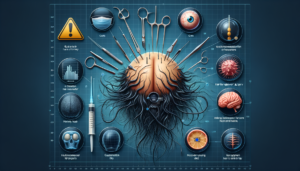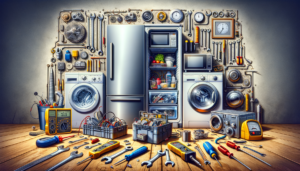The Gaming Blog
Max
Faux stone panels offer a versatile and cost-effective option for enhancing the aesthetic appeal of any space Read More
Understanding and identifying depressive tendencies is crucial for early intervention and effective management Read More
Explore the intricacies of hair transplant surgery, including techniques, costs, recovery process, and potential risks involved Read More
Introduction to Stair Lifts Stair lifts are essential mobility aids designed to assist individuals who face challenges in navigating stairs. These devices offer a safe and practical solution for enhancing accessibility within multi-level homes. With the aging population and increasing demand for home modifications that support independent living, stair lifts have become a vital addition Read More
Introduction to Diabetes Management Diabetes is a chronic condition that affects millions of people worldwide. Effective management and treatment are crucial to prevent complications and improve quality of life. This article explores the various treatment modalities available for diabetes and discusses strategies for complication prevention, providing a comprehensive understanding of this critical health issue. Pharmacological Read More
Lifestyle intervention Dietary management: Control total calorie intake and reduce refined sugar and high-fat foods. Increase dietary fiber (such as whole grains and vegetables) to delay sugar absorption. The DASH diet (low sodium, high fiber) can effectively lower blood pressure and blood sugar. Exercise therapy: At least 150 minutes of moderate-intensity exercise per week (such as brisk walking and swimming). Exercise can improve insulin sensitivity and help control weight. Drug treatment Oral hypoglycemic drugs: Biguanides (such as metformin): first-line drugs that reduce liver glucose output and improve insulin sensitivity. Sulfonylureas (such as glimepiride): stimulate insulin secretion, but may cause hypoglycemia. SGLT-2 inhibitors (such as dapagliflozin): promote urinary glucose excretion and reduce cardiovascular risk. GLP-1 receptor agonists (such as semaglutide): delay gastric emptying, promote insulin secretion, and help lose weight. Insulin therapy: Applicable to patients with T1D and advanced T2D, the dose needs to be adjusted according to blood glucose monitoring. Surgical treatment Metabolic surgery (such as gastric bypass): Applicable to patients with T2D with BMI ≥ 35, which can significantly improve blood glucose control, and some patients can even achieve long-term remission. Long-term nutritional monitoring is required after surgery to prevent vitamin deficiency. Emerging therapies Stem cell therapy: Still in the research stage, it may improve blood glucose by repairing β-cell function. Precision medicine: For example, Dapagliflozin + insulin combination therapy for adolescent T1D can reduce renal complications. Possibility of diabetes remission Recent studies have shown that some T2D patients can achieve remission through intensive lifestyle intervention or metabolic surgery (i.e. blood glucose remains normal after stopping hypoglycemic drugs). Short-term remission (more than 1 year): Common in patients with early T2D, achieved through weight loss and diet adjustment. Long-term remission (more than 5 years): More common in patients after metabolic surgery. Diabetes management and complication prevention Blood sugar monitoring: Regularly test fasting and postprandial blood sugar and HbA1c (target <7%). Foot care: Prevent diabetic foot and avoid infection and ulcers. Vaccination: Flu and pneumonia vaccines can reduce the risk of infection Read More
Dealing with a burst water pipe can be stressful, but it's important to remain calm and seek professional plumber services to address the issue efficiently Read More
Professional maintenance makes your life a little less troublesome and a little more relaxed Read More
Introduction Forklifts are indispensable in today's warehousing and logistics operations, serving as the primary equipment for material handling. Proper forklift operation ensures smooth workflows, optimized storage, and workplace safety. This article outlines key operational practices that enhance efficiency while maintaining safety standards in warehouse environments. Read More
Plumbers are a highly skilled profession that makes modern life run smoothly. From fixing leaks to installing new plumbing systems, plumbers ensure clean water supply and proper drainage in homes and businesses. Here’s a closer look at a typical plumber’s workflow. 1. Problem Diagnosis Once on site, the plumber will assess the situation: Leaks: Check pipes, joints, and fixtures for water damage. Blockages: Use a drain camera or auger to locate the blockage. Installation: Review blueprints (if applicable) and check the plumbing layout. The plumber then explains the problem to the client, provides a cost estimate, and gets approval before proceeding. 3. Prepare Tools and Materials Depending on the job, the plumber may need: Basic tools: wrenches, pliers, pipe cutters, plungers Specialized equipment: unclogging, high-pressure water gun, welding torch Replacement parts: pipes, fittings, seals, or new fixtures If additional materials are needed, the plumber can go to a supply store before beginning the repair. 4. Perform Repairs or Installations Repair leaky pipes Turn off the water supply to prevent further damage. Drain any remaining water from the affected pipes. Use a pipe cutter to remove the damaged section. Install new pipes or fittings and secure with solder, clamps, or crimp fittings. Turn the water back on and check for leaks. Unclogging drains For minor clogs, try a plunger first. Use an unclogging tool to clear deeper clogs. If needed, use a high-pressure water jet to remove stubborn buildup. Test the drainage with running water. Install New Pipes Follow building codes to ensure pipes are the correct size and location. Measure and cut pipes to fit the layout. Connect pipes using appropriate methods (soldering, PVC glue, push-fit fittings). Test the system for leaks and water flow. 5. Testing and Quality Checks Before completing the job, the plumber will make sure everything is working properly: The pipes that have been repaired or installed are not leaking. Proper water pressure at faucets and showers. Efficient drainage of sinks, toilets, and tubs. If there are still issues, we make adjustments until the system is functioning properly. 6. Cleaning and Client Handover A professional plumber leaves the work area clean when they leave it: Clear old pipes and debris. Wipe surfaces to remove dirt or water stains. Explain the work completed to the client and provide maintenance tips. Provide invoices and process payments. 7. Follow-up and preventive recommendations To ensure long-term satisfaction, a good plumber can: Provide parts and labor warranties. Recommend routine maintenance (e.g., drain cleaning, pipe inspections). Provide contact information in case service is needed in the future. Conclusion Plumbing requires professional skills, problem-solving abilities, and attention to detail. From diagnosing problems to making precise repairs, plumbers play a vital role in maintaining safe and efficient water systems. Whether it’s an emergency repair or a brand new installation, their expertise ensures homes and businesses run smoothly. Do you want to know how to choose the right plumber, or want to learn some DIY tips on minor repairs? Feel free to contact me at any time, I will be happy to serve you! Read More












